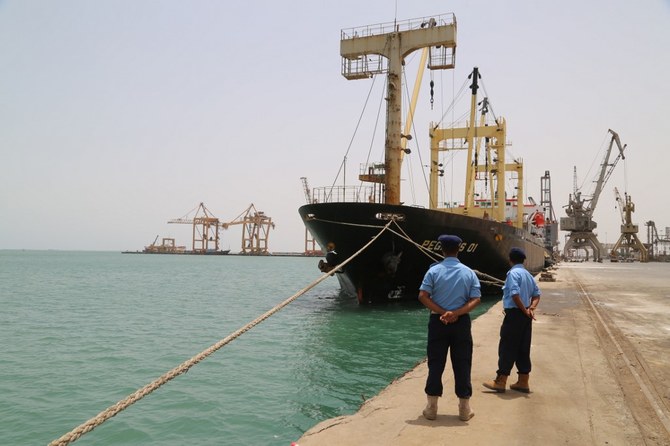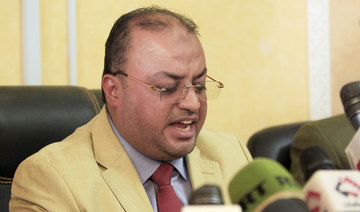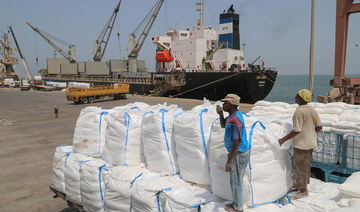KHAN YOUNIS, Gaza Strip: They arrived in the middle of the day, when the squat concrete buildings of the Nuseirat refugee camp are stifling and the narrow streets outside are filled with people. No one suspected a thing until the shots rang out.
The Israeli raid caught everyone off guard, from the Hamas militants guarding four hostages in two different buildings to the thousands of civilians who soon found themselves running for their lives through a blistering crossfire.
By the time it was over, four Israeli hostages had been brought home alive and mostly unscathed, at least physically, and at least 274 Palestinians, and an Israeli commando, had been killed.
For Israel, it was the most successful operation of the eight-month war, bringing nationwide elation and removing some of the stain from the army’s unprecedented collapse on Oct. 7. For Palestinians, it was a day of horror that sent hundreds of dead and wounded flooding into already beleaguered hospitals.
Here’s how it unfolded, according to the Israeli military and Palestinian witnesses.
‘THE ULTIMATE SUPRISE’
Noa Argamani, a 26-year-old who had emerged as an icon of the hostage crisis, was being held in one apartment and three male hostages — Almog Meir Jan, 22, Andrey Kozlov, 27, and Shlomi Ziv, 41, were in another about 200 meters (yards) away. All had been abducted from a desert rave-turned-massacre site during the Oct. 7 attack that ignited the war.
They had been moved among different locations but were never held in Hamas’ notorious tunnels. At the time of their rescue they were in locked rooms guarded by Hamas gunmen. Israeli intelligence figured out where they were and commandos spent weeks practicing the raid on life-size models of the buildings, according to Rear Adm. Daniel Hagari, the Israeli military spokesman.
“It needs to be like a surgical operation, like a brain operation,” he said.
He said they decided to strike at midday because it would be the “ultimate suprise,” and to target the two buildings simultaneously. Planners feared that if they hit one first, the captors would hear the commotion and kill the hostages in the other.
Hagari declined to say how the Israeli forces made their way to the heart of Nuseirat, a crowded, built-up refugee camp in central Gaza dating back to the 1948 Arab-Israeli war. Based on previous operations, at least some of the special forces who took part in the raid likely dressed like Palestinians and spoke fluent Arabic.
Kamal Benaji, a Palestinian displaced from Gaza City who was living in a tent in central Nuseirat, said he saw a small truck with a car in front and another behind pull up in front of a building on the street where he had pitched his tent.
The commandos sprang from the truck and one of them threw a grenade into the house. “Clashes and explosions broke out everywhere,” he said.
A VEHICLE GETS STUCK AND A FIREFIGHT ERUPTS
The rescue of Argamani seems to have gone smoothly, while the team extracting the three other hostages ran into trouble.
Chief Inspector Arnon Zamora, an officer in an elite police commando unit, was mortally wounded during the break-in, in which all the Hamas guards were killed, Amos Harel, a veteran defense correspondent, wrote in Israel’s Haaretz newspaper. Then the rescue vehicle carrying the three hostages got stuck in the camp, he said.
Palestinian militants armed with machine-guns and rocket-propelled grenades opened fire on the rescuers, as Israel called in heavy strikes from land and air to cover their evacuation to the coast. “A lot of fire was around us,” Hagari said.
It was this bombardment that appears to have killed and wounded so many Palestinians.
Mohamed Al-Habash, another displaced Palestinian, was in the Nuseirat market looking for humanitarian aid or inexpensive food when the heavy bombing began. He took cover with a half-dozen other people in a damaged home. He said many other houses were hit.
“We heard very loud bombing and heavy gunfire,” he said. “We saw many fighter jets flying over the area.”
The Israeli rescuers eventually made it to the coast. Zamora was evacuated by helicopter and later died of his wounds in a hospital. The military renamed the operation in his honor.
Footage released by the military showed soldiers walking the hostages along the beach toward the water and helicopters whipping up clouds of sand as they took off.
‘We called the hostages diamonds, so we say we have the diamonds in our hands,” Hagari said.
THE AFTERMATH
At the Al-Aqsa Martyrs Hospital in the nearby town of Deir Al-Balah, the dead and wounded arrived in waves — men, women and children. It’s one of the last functioning medical facilities in the area and was already packed with people wounded in heavy strikes in recent days.
Samuel Johann, a coordinator with the international charity Doctors Without Borders, which operates in the hospital, said it was a “nightmare.”
“There have been back-to-back mass casualties as densely populated areas are bombed. It’s way beyond what anyone could deal with in a functional hospital, let alone with the scarce resources we have here,” he said in a statement released by the group.
The Gaza Health Ministry said 274 Palestinians were killed and around 700 were wounded. The ministry does not distinguish between civilians and combatants in its tallies, but said the dead included 64 children and 57 women.
Khulood Shalaq, who was being treated at another hospital with her wounded 1-year-old nephew, said 14 members of her family were killed in the raid, with some still buried in the rubble. She said at one point she saw four helicopters launching missiles into the camp.
“The streets are filled with dead bodies,” she said.
Hamas later released a video claiming that three other hostages, including an American, were killed in the bombardment, but it provided no evidence. The army said it does “not respond to statements by terrorist organizations.”
Hamas and other militants are still holding some 120 hostages, around a third of whom are believed to have died. Hagari acknowledged that a ceasefire deal would bring home more hostages than military operations, but said Israeli forces need to “create conditions” to bring them home.
“We are doing things that are unimaginable, and we will keep on doing things that are unimagined,” he said.


























